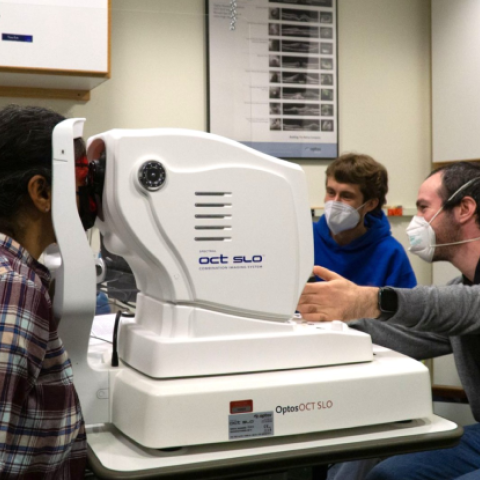

- Principal Investigator:
- Lora Likova
This Science of Learning Collaborative Network brings together researchers and experts from the Smith-Kettlewell Eye Research Institute, University of Bamberg (Germany), Columbia University and Emory University to investigate how the visual art of drawing can enhance learning. Underlying learning principles and neural mechanisms will be considered, and how these can be harnessed for real-life learning enhancement. Though humans have been drawing for at least 30,000 years, little is understood about brain processes involved in this activity. The collaborative team represents the fields of neuroscience, art, education, neuro-rehabilitation, psychology, embodied cognition and learning theory. The goal is to understand the brain mechanisms involved in drawing and learning-though-drawing, and how to translate this insight for the enhancement of learning across a spectrum of vision function, from the fully-sighted to the large population suffering from visual deficits. A novel training procedure will be developed to speed up spatial, temporal and cognitive integration that is essential for many aspects of everyday functioning, including education, problem solving and the generation of ideas. With the explosion of new knowledge and larger social implications of the information age, this new multi-sensory approach to the enhancement of learning is expected to produce multiple societal benefits. The conceptualization of drawing as an active-learning intervention will provide a rich new framework for future research on learning, education and rehabilitation, along with a better understanding of the underlying brain mechanisms, which in turn will further inform the contributory fields.
The collaborative network has four overarching goals: First: to develop an effective working collaboration to study the power of drawing for learning. Second: to translate and expand surprising successes from previous work of the lead P.I. with blind individuals. Key research targets within this goal include (a) using advanced brain imaging techniques to identify brain mechanisms and learning principles underlying enhancement of learning-through-drawing, (b) generalizing that knowledge to design novel drawing-based methods to enhance learning, and testing those with STEM material in classrooms and labs, and (c) gaining insights in learning-related processes that may lie outside standard academic strategies. The third goal is to develop an innovative multi-sensory drawing training effective across levels of vision function, both to alleviate vision-based learning deficiencies in those with partial visual impairments, and to ameliorate their potential transition to severely limited or non-visual function as their condition worsens. The fourth is capitalizing on the insights and data accumulated, and the high-level expertise of the network across a wide range of relevant fields, to organize a forum to consider the results in the global context, to formulate overarching questions, and to map out the direction of future work to address them.
The award is from the Science of Learning-Collaborative Networks (SL-CN) Program, with funding from the SBE Division of Behavioral and Cognitive Sciences (BCS) and the SBE Office of Multidisciplinary Activities (SMA).

